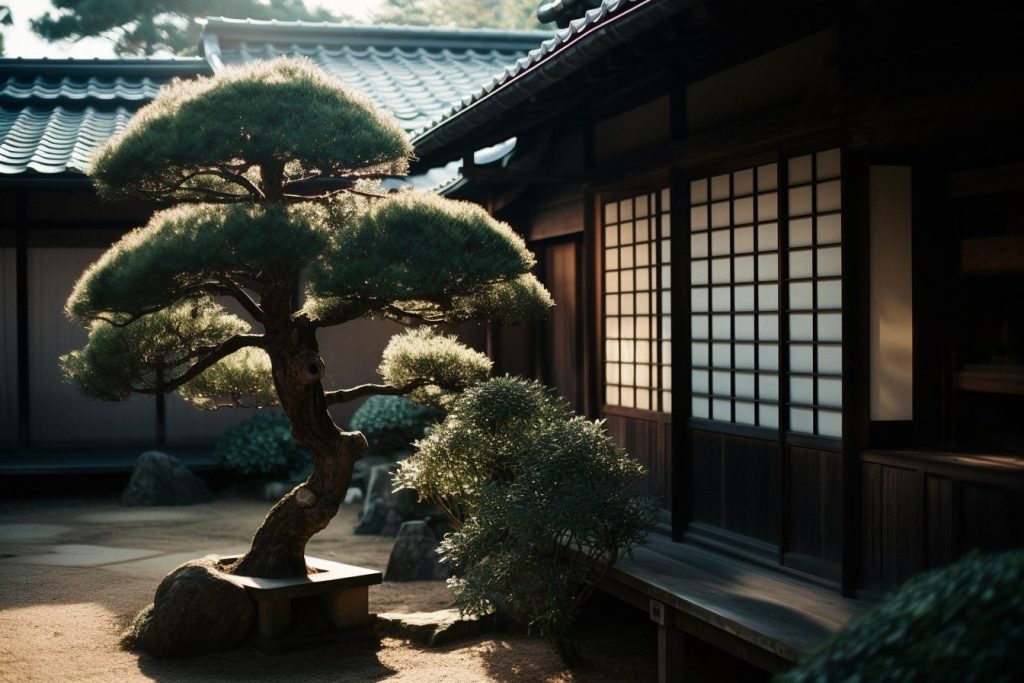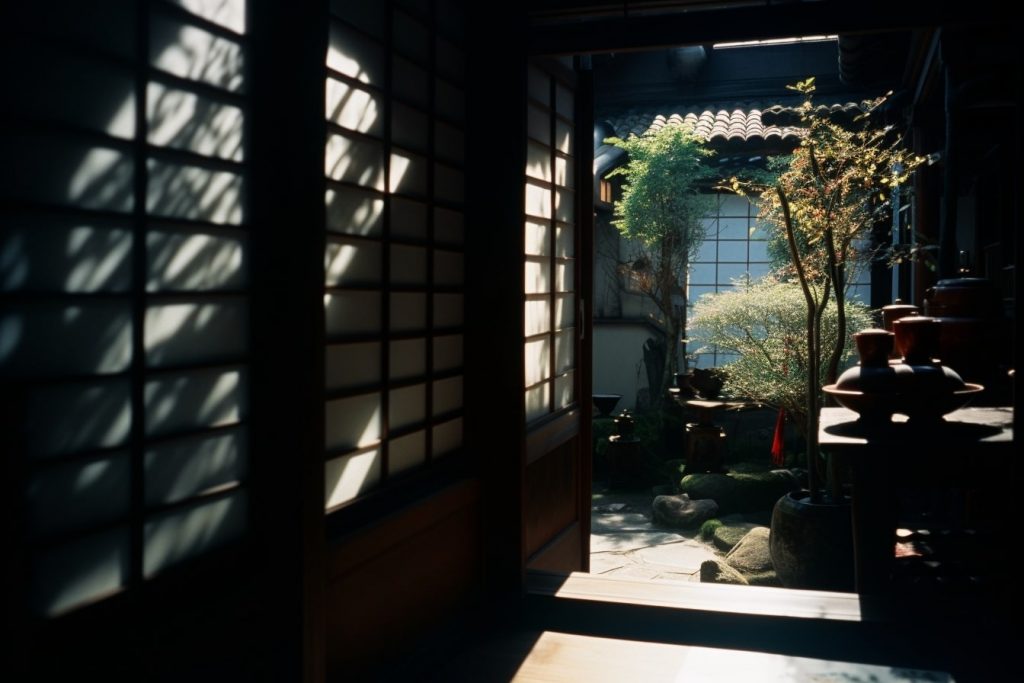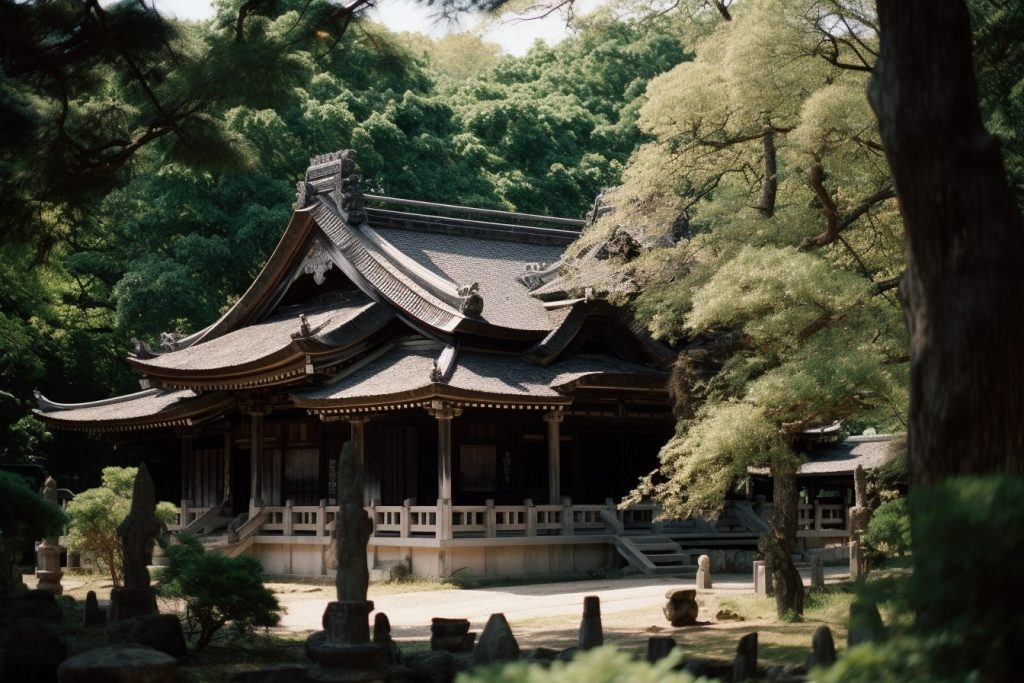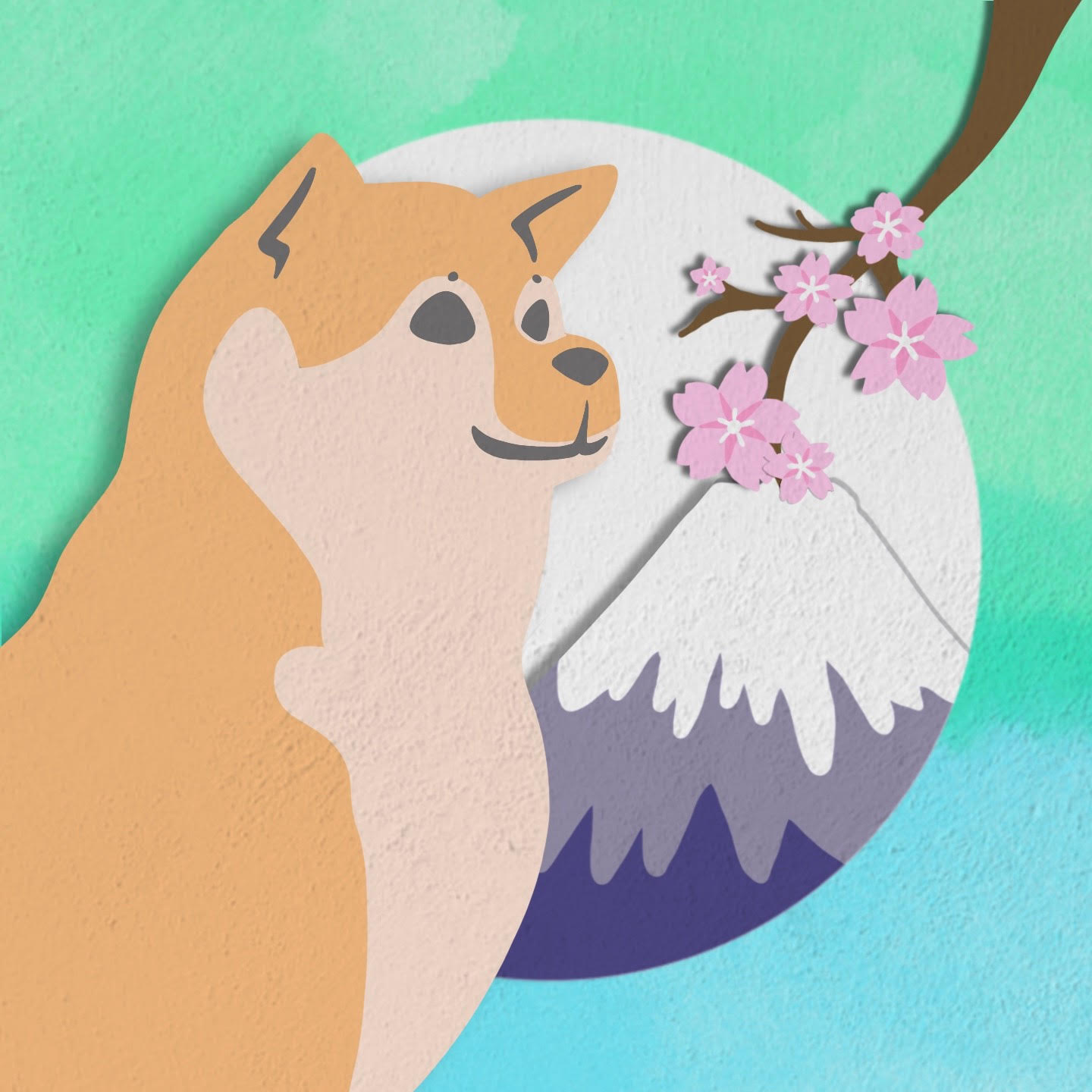Discover the fascinating world of Japanese culture and etiquette with our beginner’s guide.

Japan is renowned for its unique culture and traditions. With a history dating back thousands of years, Japan’s customs and etiquette have been shaped by various religious and cultural influences. To truly appreciate and embrace Japanese culture, it’s essential to understand its customs and etiquette practices. In this article, we’ll delve into the basics of Japanese culture and etiquette, providing practical tips and insights along the way.
Understanding Japanese culture
The importance of harmony and balance
Harmony and balance are central themes in Japanese culture. From its traditional art forms to its philosophy, Japan places great emphasis on finding balance in all aspects of life. This philosophy is reflected in the way Japanese people interact with each other, with a strong emphasis on respect and consideration for others. In fact, Japanese culture has a unique concept called “wa,” which refers to harmony and balance in social and personal relationships.
One way in which the concept of “wa” is reflected in Japanese culture is through the practice of tea ceremony. This traditional art form involves the preparation and serving of matcha tea in a highly ritualized manner. The ceremony emphasizes the importance of harmony and balance in all aspects of the experience, from the arrangement of the tea utensils to the interaction between the host and guests.

The role of religion in Japanese culture
Religion plays a significant role in Japanese culture, with Shintoism and Buddhism being the two most prevalent religions. Shintoism is a nature-based religion that originated in Japan and involves the worship of ancestors and nature deities, while Buddhism was introduced to Japan from China and Korea in the 6th century.
Both religions have greatly influenced Japanese culture and can be seen in various aspects of daily life, such as the design of temples and shrines and the significance of rituals and ceremonies. Respect for religion is also deeply ingrained in Japanese culture, and visitors should familiarize themselves with the customs and etiquette associated with temples and other sacred sites.
One example of the influence of religion on Japanese culture is the annual Obon festival, which is held in August and is a time to honor ancestors and deceased loved ones. During this festival, families clean and decorate gravesites and offer food and incense to their ancestors. The festival also includes traditional dances and music performances.
The influence of art and aesthetics
Art and aesthetics are integral parts of Japanese culture, with a focus on simplicity and nature. Japanese art forms, such as calligraphy, origami, and ikebana (flower arrangement), are renowned for their elegance and precision. Similarly, architecture and design in Japan reflect a minimalist aesthetic, with an emphasis on clean lines, natural materials, and a sense of harmony between the interior and exterior spaces.
One example of the influence of Japanese aesthetics on modern design is the concept of “wabi-sabi,” which is a philosophy that embraces imperfection and transience. This concept can be seen in the popularity of rustic, handcrafted items and the use of natural materials in interior design.
Overall, understanding Japanese culture requires an appreciation for the importance of harmony, balance, and aesthetics in daily life. From the practice of tea ceremony to the influence of religion on art and design, Japanese culture offers a unique perspective on the world that is worth exploring.

Essential Japanese etiquette
Japan is a country with a rich cultural heritage, and its customs and traditions are an integral part of everyday life. Japanese etiquette is a complex and nuanced system that governs social interactions, and it’s essential to understand the basics before visiting the country.
Greetings and introductions
Japanese people place great importance on greetings and introductions, and they are considered a vital part of social interactions. When meeting someone for the first time, it’s customary to bow as a sign of respect. The depth of the bow depends on the situation and social context, with a deeper bow being appropriate in more formal situations. It’s also common to exchange pleasantries and inquire about the other person’s well-being before moving on to the main topic of conversation.
In Japan, it’s important to address people using their honorific title, such as “san” or “sama,” depending on the person’s status and relationship to you. When introducing yourself, it’s customary to state your name and your affiliation or profession, as this helps to establish your identity and social status.

Bowing and its significance
Bowing is a quintessential part of Japanese etiquette, and it’s important to understand its significance. Bowing is a sign of respect and humility, and it’s used to show gratitude, apology, or deference. The depth of the bow varies depending on the social context, with a deeper bow being appropriate in more formal situations.
It’s important to note that the person of higher status or age initiates the bow, and the other person responds with a bow of equal or lesser depth. When in doubt, it’s best to follow the lead of your Japanese counterparts and mirror their behavior.
Exchanging business cards
When doing business in Japan, exchanging business cards is an essential part of the introduction process. Business cards, or “meishi,” are considered a representation of the person and their company, and they are treated with great respect.
When presenting your card, it’s customary to hold it with both hands and present it with the text facing upwards towards the recipient. This shows that you are offering your card with respect and humility. Similarly, when accepting a card, it’s important to receive it with both hands and study it carefully before putting it away. This shows that you are acknowledging the importance of the card and the person who gave it to you.
It’s also common to exchange a few pleasantries and inquire about the other person’s business before moving on to the main topic of discussion. This helps to establish a rapport and build trust, which are essential elements of doing business in Japan.
Overall, understanding Japanese etiquette is essential for anyone who wants to build relationships and do business in Japan. By following these customs and traditions, you can show respect and establish a strong foundation for future interactions.
Navigating social situations
Japan is a country with a rich cultural heritage, and as a visitor, it’s important to be aware of the customs and traditions that are deeply ingrained in Japanese society. When interacting with Japanese people, it’s essential to be respectful and mindful of their cultural practices. In this section, we will explore some of the key social customs that you should be aware of when visiting Japan.
The art of gift-giving
Gift-giving is a highly valued practice in Japanese culture, and it’s essential to know the proper etiquette surrounding it. When giving a gift, it’s important to wrap it beautifully, as presentation is just as important as the gift itself. The act of gift-giving is seen as a way of expressing gratitude and building relationships, so it’s important to choose a gift that is thoughtful and appropriate for the recipient. In Japan, it’s customary to bring a small gift when visiting someone’s home or office. This could be anything from a box of chocolates to a small souvenir from your home country.
It’s also important to note that in Japan, it’s common for gifts to be reciprocated. If someone gives you a gift, it’s polite to return the gesture with a gift of your own. This is seen as a way of showing your appreciation and respect for the other person.
Dining etiquette and table manners
Food is an essential part of Japanese culture, and dining etiquette is highly valued. When dining in Japan, it’s essential to use chopsticks correctly, with the pointed ends facing upwards. Similarly, it’s important to wait until everyone at the table has been served before beginning to eat. This shows respect for your fellow diners and is considered good manners.
Slurping noodles is also considered polite, as it indicates that you are enjoying the meal. In fact, in some noodle restaurants, it’s even encouraged! However, it’s important to note that loud eating noises are generally frowned upon, so try to eat as quietly as possible.
Another important aspect of dining etiquette in Japan is the concept of “gaman.” This refers to the idea of enduring discomfort or difficulty without complaint. In the context of dining, this means that you should try to finish everything on your plate, even if you don’t particularly like it. Leaving food on your plate is seen as wasteful and disrespectful to the person who prepared the meal.
Drinking customs and practices
Drinking plays a significant role in Japanese culture, and it’s essential to know the proper etiquette surrounding it. When drinking with others, it’s customary to pour drinks for each other rather than pouring your own. This is seen as a way of showing respect and camaraderie with your drinking companions.
It’s also important to note that in Japan, it’s common for people to drink in rounds. This means that one person will order a round of drinks for everyone at the table, and then the next person will take their turn. If you’re not a fan of alcohol, it’s perfectly acceptable to simply order a soft drink instead.
Finally, it’s important to drink responsibly and not overindulge. In Japan, it’s considered impolite to get drunk and lose control in public. If you do drink too much, it’s important to apologize and take responsibility for your actions.
By following these social customs and practices, you can show respect for Japanese culture and build positive relationships with the people you meet during your visit. Enjoy your time in Japan, and remember to be mindful of the customs and traditions that make this country so unique.

Visiting sacred sites and temples
Japan is home to a rich cultural heritage that is deeply rooted in the country’s religious traditions. Visiting sacred sites and temples is an essential part of experiencing Japan’s unique culture and history. These sites are not only beautiful and awe-inspiring, but they also offer a glimpse into the country’s spiritual beliefs and practices.
Proper attire and behavior
When visiting temples and other sacred sites in Japan, it’s important to respect the customs and traditions associated with these places. Dress modestly and remove your shoes before entering the site. It’s also important to be mindful of your behavior, as these places are considered sacred and should be treated with reverence.
As you explore the temple grounds, take the time to appreciate the intricate details of the architecture and the peaceful atmosphere that surrounds you. Remember to be respectful of other visitors and avoid loud or disruptive behavior.
Rituals and offerings
Temples and shrines in Japan often have various rituals and offerings associated with them. For example, it’s customary to cleanse your hands and mouth with water before entering a shrine. This ritual, known as temizu, is meant to purify the body and mind before approaching the sacred space.
Additionally, it’s common to make offerings of money or coins at shrines and temples. These offerings, known as ema or omikuji, are believed to bring good luck and fortune. Take the time to observe and appreciate these rituals, even if you don’t fully understand them.
Understanding temple etiquette
Each temple and shrine in Japan has its own customs and etiquette, so it’s essential to familiarize yourself with these before visiting. For example, some temples prohibit photography or require visitors to remain silent. Be respectful of these rules and follow the lead of your Japanese counterparts.
One important aspect of temple etiquette is the way in which you approach the main hall or altar. It’s customary to bow before entering these areas as a sign of respect. Additionally, it’s important to avoid pointing your feet towards the altar, as this is considered impolite.
By following these customs and traditions, you can fully immerse yourself in the rich cultural heritage of Japan and gain a deeper appreciation for the country’s spiritual beliefs and practices.

Public behavior and manners
Japan is a country with a rich cultural heritage, and it’s essential to know the proper etiquette associated with public behavior and manners. Here are some additional tips to keep in mind:
Wearing Face Masks
It has been a month since Japan relaxed its mask-wearing regulations on the 13th of March, 2023, yet many people continue to wear masks in public places like trains, workplaces, and schools. While some individuals wear masks to protect against infection, others do so because of social pressure or force of habit. Nevertheless, there is a growing number of people who choose to remove their masks based on the specific situation.
According to an article published by The Sankei News on the 14th of April 2023, before the relaxation of mask-wearing rules, 64.8% of people wore masks unconditionally. This number has decreased to 39.6%. On the other hand, the percentage of those who wear masks depending on the situation has increased from 33.5% to 53.4%.

Using public transportation
Japan has one of the most extensive and efficient public transportation systems in the world. When using trains, it’s important to be mindful of the designated seating areas for elderly, disabled, and pregnant passengers. These seats are clearly marked, and it’s essential to give up your seat to those who need it more than you do. Additionally, it’s important to refrain from talking on the phone or engaging in loud conversations on public transportation. This is considered impolite and disrespectful to your fellow passengers.
When using buses, it’s important to enter from the rear and exit from the front. This ensures a smooth and efficient boarding process for everyone. It’s also important to have your fare ready before boarding, as this helps to keep the bus running on time.
Respecting personal space
Japan places a strong emphasis on personal space and respecting the boundaries of others. It’s essential to be mindful of personal space in crowded areas, such as trains and elevators. When in these situations, it’s important to avoid physical contact or touching others without permission, as this is considered impolite and rude. Instead, try to position yourself in a way that allows for maximum personal space for everyone.
When walking on the street, it’s important to stay on the left side of the sidewalk. This allows for a smooth flow of pedestrian traffic and helps to prevent collisions. It’s also important to be mindful of your surroundings and avoid blocking the sidewalk or impeding the flow of foot traffic.

Noise and cellphone usage
Japanese culture places a strong emphasis on peace and tranquility, particularly in public spaces. Be mindful of noise levels and refrain from talking loudly or engaging in disruptive behavior in public areas. This includes not only public transportation, but also parks, temples, and other public spaces. Remember to be considerate of others and keep noise levels to a minimum.
Similarly, it’s important to silence your cellphone and refrain from using it in quiet areas, such as museums and libraries. If you must take a call, move to a designated area where cellphone use is permitted. This helps to maintain a peaceful and respectful environment for everyone.
By following these simple tips, you can ensure that you are showing respect and consideration for the people and culture of Japan. Remember, good manners and behavior are essential for a harmonious and respectful society.
Language and communication
Basic Japanese phrases for travelers
While many Japanese people speak English, it’s always appreciated when travelers make an effort to speak Japanese. Familiarize yourself with basic greetings and phrases, such as “hello” (“konnichiwa”), “thank you” (“arigatou gozaimasu”), and “excuse me” (“sumimasen”).
Non-verbal communication and body language
Non-verbal communication and body language play a significant role in Japanese culture, particularly in social and business settings. Pay attention to facial expressions, posture, and gestures, as these can convey subtle nuances in communication. Additionally, be mindful of your own body language, as it can have a significant impact on how you are perceived.
Addressing others with respect and politeness
Japanese culture places great emphasis on respect and politeness in social interactions. When addressing others, use formal titles and honorifics to show respect. Similarly, it’s important to use humble language and avoid boasting or showing off. By showing respect and consideration for others, you’ll be able to navigate social situations with ease.
By understanding the basics of Japanese culture and etiquette, travelers can deepen their appreciation and understanding of this unique and fascinating country. Whether you’re visiting Japan for business or pleasure, following these tips and insights will help you navigate social situations with ease and grace.
Related Articles
AI Girlfriends: Exploring the World of Virtual Companions
AI-generated girlfriends are growing popular on Japanese Twitter. Learn more about what they can do, and what it could mean for the future.
Discover Japan’s Top 10 Must-Visit Places
From stunning landscapes to bustling cities, Japan offers many unforgettable experiences. Here are Japan’s top 10 best places to visit!





